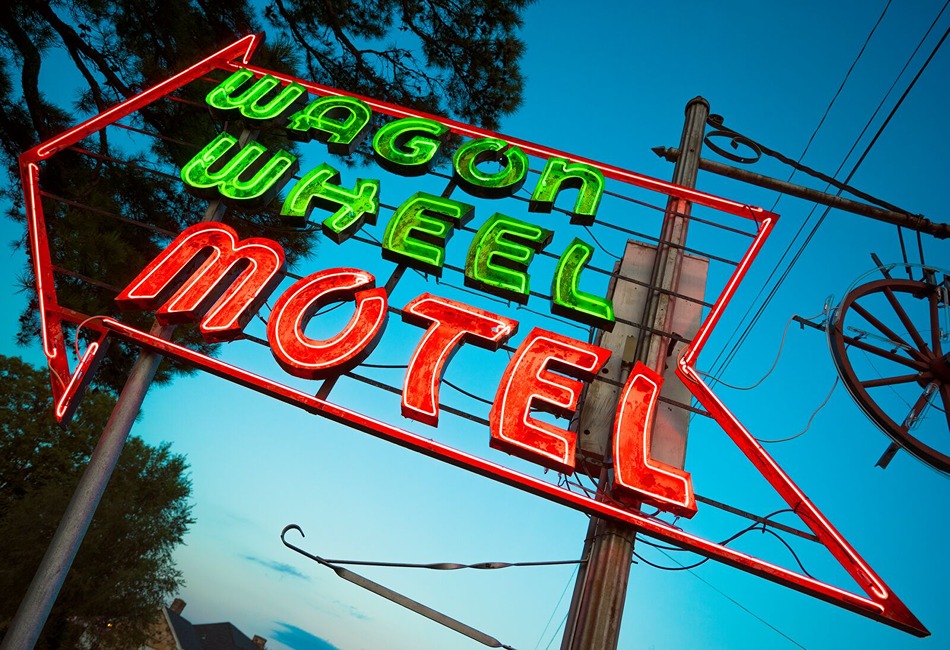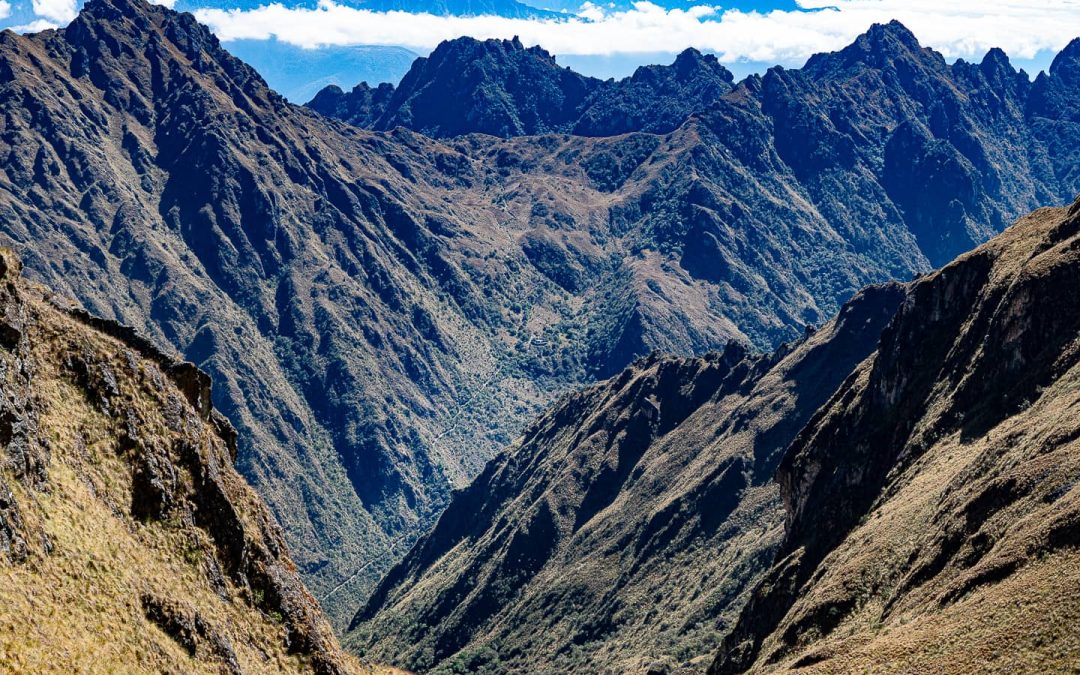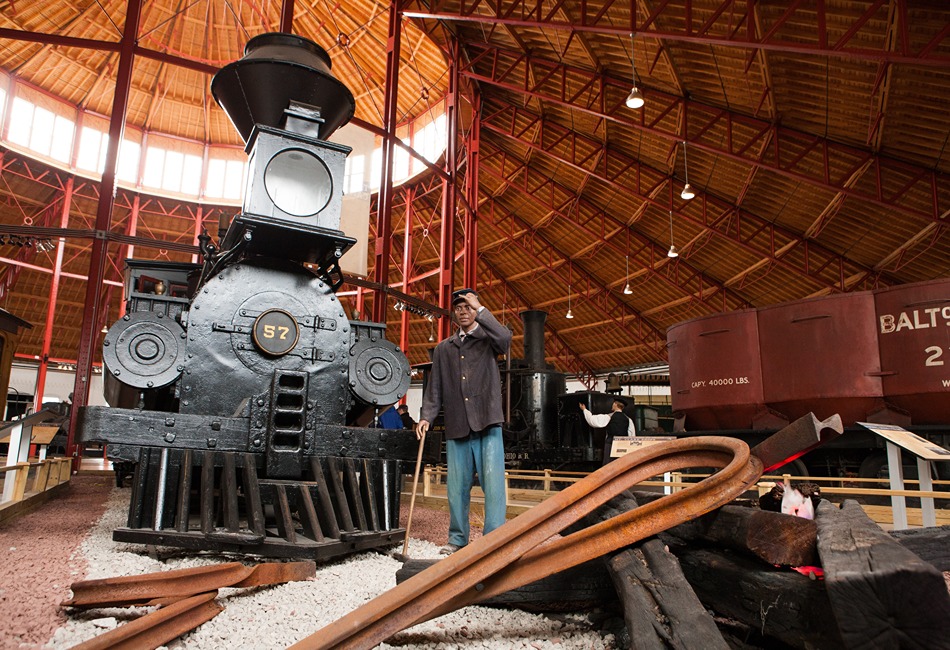Gearing up for its 100th anniversary, the historic highway remains a symbol of freedom and wanderlust
By Randy Mink
Floating in his own pond next to a picnic area, the Blue Whale of Catoosa, Oklahoma epitomizes the kitschy roadside curiosities that intrigued motorists during the heyday of Route 66, the most fabled highway in America. The smiling marine mammal, a cement behemoth measuring 80 feet long, is one of the most iconic landmarks along the legendary ribbon of pavement that traversed eight U.S. states from Chicago to Santa Monica, California.
For more travel tips and ideas for groups, be sure to Download the June edition of Leisure Group Travel and subscribe for FREE
Like many places along the road in Oklahoma and elsewhere, the whale and surrounding park are undergoing upgrades in preparation for Route 66 Centennial celebrations in 2026. Though the east-west corridor, affectionately known as the Mother Road, was replaced by superhighways decades ago, vast stretches of the old two-lane artery are still open to traffic, allowing travelers to leave the fast lane and see the real America, a land sprinkled with neon signs, quirky wayside attractions, souvenir shops, cozy motels and mom-and-pop diners dishing upcomfort food.
With the 100th anniversary of Route 66 fast approaching, communities along the highway are fixing up vintage neon signs and installing new ones. Downtown historic districts are being spruced up, new attractions are being unveiled and museums are undergoing expansions or adding new features as they get ready to celebrate the golden age of automobile travel. Towns big and small will be supercharging their existing annual events for 2026, and colorful murals are beautifying old buildings.
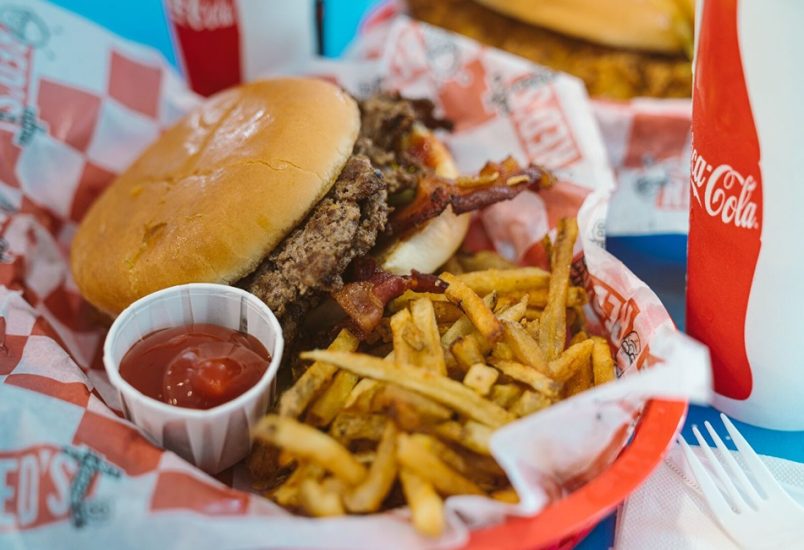
Red’s Giant Hamburg in Springfield, Missouri
Multiple Route 66 Projects in Oklahoma
Thanks to a Route 66 grant program administered by the Oklahoma Route 66 Commission and Oklahoma Department of Commerce, travelers dropping by Catoosa’s Blue Whale soon will find a spiffy new visitor center, neon sign, picnic area and playground, along with a waterfall, pond-circling path and nature trails. Built by Hugh Davis for his wife in 1972, the site (now city-owned) became a play area for their grandkids and then a swim park/fishing hole enjoyed by locals and Route 66 wayfarers.
The nearby town of Claremore has several claims to fame. Its prime attraction is the Will Rogers Memorial Museum, which honors humorist-philosopher-movie star Will Rogers, the most famous person in the world in the 1920s and ’30s. An expansion featuring AI and other high-tech enhancements will be unveiled in the next year or two. Rogers, whose rise to fame started with a rope-trick act in vaudeville, was born during Indian Territory days on a nearby ranch. (Route 66 is known as the Will Rogers Highway, and his name pops up in places throughout the state.)
At the Claremore Museum of History, visitors can view a clip from the classic Rodgers & Hammerstein Broadway musical Oklahoma! and its most notable artifact, “The Surrey with the Fringe on Top,” one of two carriages used in the 1955 movie version as Gordon MacRae serenaded Shirley Jones with the namesake song. The museum devotes one room to local playwright Lynn Riggs, whose play Green Grow the Lilacs was adapted into the musical, and also spotlights Claremore’s Patti Page, “The Singin’ Rage,” one of the 1950s’ top recording artists.
Mother Road enthusiasts find numerous treasures in Tulsa, especially along 11th Street with its neon Route 66 signs, colorful murals, oversized statues and old-time motor courts. Called the Capital of Route 66, the city has a 28-mile stretch of Route 66 to explore.
Selfie spots in the Meadow Gold District, named for the huge neon dairy company sign at 11th and Quaker Avenue, include the giant space cowboy and cowgirl statues at Buck Atom’s Cosmic Curios souvenir store, one of several fun shops and galleries on 11th. Such 20-foot-tall fiberglass figures, referred to as “Muffler Men” by pop culture historians, were considered the height of outdoor advertising in the 1960s. A new giant, named Cowboy Bob, will be the mascot for Buck’s Vintage, a shop that will be opening in its new location this summer directly across from the historic Meadow Gold sign. Just below the sign, a lumberjack Muffler Man towers over Meadow Gold Mack’s Route 66 Outpost. And coming soon to historic Howard Park on Route 66 is a 66-foot-tall dinosaur sculpture, adding to Tulsa’s reputation as the Land of Giants.
For more travel tips and ideas for groups, be sure to Download the June edition of Leisure Group Travel and Subscribe for FREE
In Southwest Tulsa, more photo-worthy subjects await at Route 66 Historical Village, an open-air museum with a collection of old train cars and a towering 154-foot oil derrick, the tallest in North America. Its visitor center replicates a 1920s Phillips 66 gas station.
Tulsa makes a strong case for being the true birthplace of Route 66. Tulsa businessman and state highway commissioner Cyrus Avery was responsible for plotting out the paved highway and assigned the road its 66 number designation. The memory of the “Father of Route 66” is enshrined in larger-than-life bronze sculptures at Cyrus Avery Centennial Plaza, a great photo stop at the Arkansas River, on the edge of downtown. The artwork depicts Avery getting out of his Motel T to help a farmer in a horse-drawn carriage, capturing the collision of the past and the future along the Mother Road.
In conjunction with the Route 66 Centennial, a parade featuring thousands of classic cars is planned for May 30, 2026 in Tulsa.
Sapulpa, a short drive from Tulsa, offers an inviting downtown shopping core that will be even more attractive when its streetscape redesign is completed. An Oklahoma Route 66 grant is fueling the Dewey Avenue facelift and a new park centered on Rock Creek Bridge, once part of the old highway. The town’s Teepee Drive-In, an outdoor movie theater dating from the 1950s, was recently restored and accommodates up to 300 cars. Other Sapulpa crowd-pleasers include Heart of Route 66 Auto Museum, where you can ogle classic cars polished to perfection and pose by the world’s tallest gas pump (soaring 66 feet into the sky).
Route 66 has always been a corridor of commerce, and neon beacons have lit the way, encouraging travelers to stop a spell and contribute to the local economy. In Stroud, Oklahoma, a grant has been awarded for a neon light project that will provide a sign for participating businesses along the entire 15-block stretch of the historic downtown. A separate grant will go toward restoring the vintage neon sign at Stroud’s Rock Cafe, a favorite Route 66 diner since 1939. Owner Dawn Welch was the inspiration behind the character Sally Carrera in Disney/Pixar’s Cars, and movie memorabilia lines the walls. This is the place for chicken-fried steak with white pepper gravy, but the German-inspired dishes are tempting as well. The biscuits are the best anywhere and often sell out early.
The proposed Route 66 Neon Park in Oklahoma City will feature 10 iconic signs originally visible on Oklahoma’s stretch of Route 66 from 1939-2016, all fully restored with neon lighting. The free outdoor exhibit, with a walk-through path, an Airstream-style bandstand for concerts, vintage billboards and a bathroom facility modeled after a 1950s Phillips 66 Gull Wing service station, will be strategically located on Route 66 on the grounds of the Oklahoma History Center, across from the State Capitol.
The Filling Station, a restored gas station on Route 66 in El Reno just opened as a visitor center. It features a rotating display of classic cars and a catchy mural. There will be bus parking across the street.
El Reno is the home of the onion burger, an Oklahoma specialty. A Depression-era creation concocted to bolster the size of the ground beef patty, it’s made by smashing thinly fried onions into the meat frying on the grill. The caramelized onions form a savory crust on the burger, enhancing its flavor and texture. The famous El Reno burger joints are Sid’s Diner, Johnnie’s Hamburgers & Coneys, Robert’s Grill and Jobe’s Country Boy Drive-In.
El Reno’s Heritage Express Trolley, a reconditioned 1924 streetcar, offers narrated rides through downtown from the Canadian County Historical Museum. If the vehicle looks familiar, you may have seen its replica in the climactic last scene of Twisters, the 2024 storm chasers movie filmed in El Reno and elsewhere in Oklahoma, a state that is no stranger to tornadoes.

Mr D’z Route 66 Diner in Kingman, Arizona. Photo courtesy of Explore Kingman
New in Kansas
Kansas claims only 13 miles of Route 66 but has some endearing sites, including some great murals in Galena and Baxter Springs; Marsh Arch Bridge, the last remaining rainbow-arch bridge on the route; and Old Riverton Store in Riverton, which is celebrating its 100th anniversary this year.
On the horizon in Galena is Petrol Motor Quart, a motor court that will offer cabins fashioned after gas stations from the past. Each automotive-themed cabin will have neon signs and midcentury-style bathrooms with colored tiles. Aaron Perry, owner of Gearhead Curios, recently broke ground on the project, which will take five years to complete, but cabins will be bookable as they are finished.
For more travel tips and ideas for groups, be sure to Download the June edition of Leisure Group Travel and Subscribe for FREE
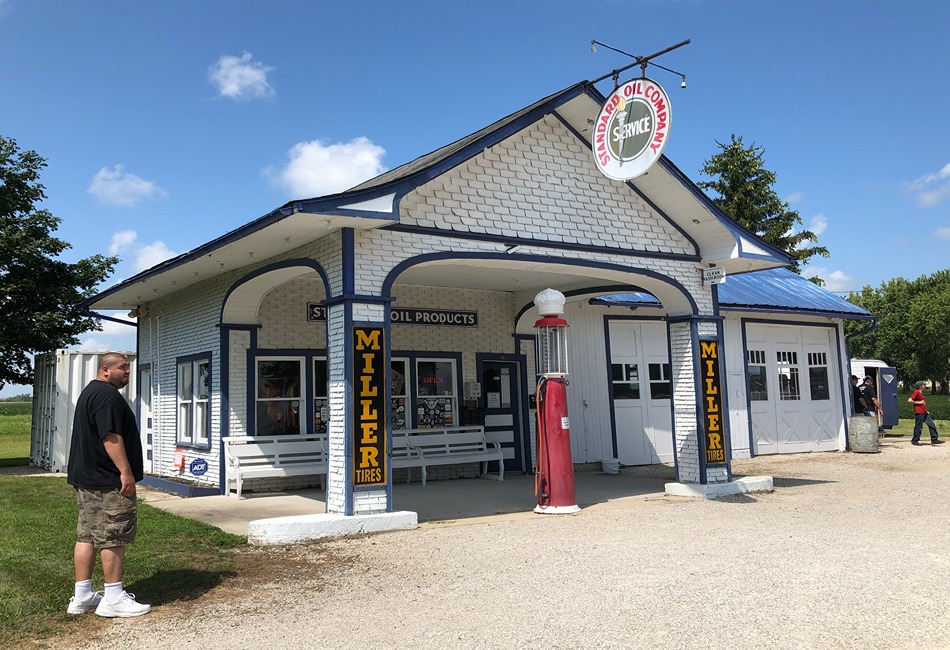
The historic Standard Oil of Illinois Gas Station in Odell, Illinois
Latest Route 66 Developments in Missouri
Brand new in the Pulaski County town of St. Robert, Missouri is the Route 66 Neon Park, which features nearly a dozen retro signs, each with a storyboard and historical photo. Positioned among oak trees in an existing roadside park, the neon artifacts from Route 66 businesses across Missouri will be lit at night. There are signs from motels, a liquor store, bail bonds company and auto garage.
Down the road in Waynesville, the 8-foot-tall Route 66 shield is the perfect selfie spot. Hoppers Pub, across the street, is decorated with the roadway’s memorabilia and other antiques. The restaurant offers 66 beers on tap, and a buffet lunch and speaker can be arranged for the group. The Pulaski County Tourism Bureau offers an illustrated driving tour brochure with turn-by-turn directions to 50-plus stops–motels, cafes, gas stations and many other enterprises that flourished during 66’sprime–and the bureau can provide a step-on guide for bus groups.
Unveiled last year in St. Louis, Chain of Rocks Park has been attracting Route 66 fans to Old Chain of Rocks Bridge–a steel landmark spanning the Mississippi River where Illinois and Missouri meet. The park has an event space, a pavilion, restrooms, plaza for food trucks and parking lot with spaces for cars and buses. The mile-long span served Route 66 travelers from 1936-1965 and is now used by pedestrians and bicyclists.
A recent Route 66 addition to the Missouri town of Pacific, southwest of St. Louis, is Red Cedar Inn Museum & Visitor Center, a log building that opened as a restaurant in 1934 and closed in 2005. In Sullivan, near Meramec Caverns, Shamrock Court, a meticulously restored 1940s motor court, will open this August for the first time in over 50 years.
Cruising Along Route 66 in Illinois
Recent Route 66 developments in Illinois include Illinois State Fairgrounds Route 66 Experience, an outdoor walk-through exhibit with little red sheds highlighting businesses and attractions, past and present, in 92 Illinois communities. The garden courtyard brims with replicas of billboards and neon signs that once advertised motels, a drive-in movie theater and other places along the fabled ribbon of roadway. Illuminated at night, the signs cast a magical glow. Nearby, Shea’s Gas Station Museum reopened last year, bringing back to life a Texaco and Marathon station that served Route 66 travelers from 1946-1982.
The Springfield area’s new Route 66 Mural Trail provides plenty of photo ops. In 2024, 12 wayside exhibits were installed in and around Springfield, and some have audio stories. After being hidden away and overgrown for more than 90 years, Carpenter Park Original Route 66 Pavement, a quarter-mile stretch of road nestled beside the Sangamon River in Springfield, reopens to foot traffic in July with accompanying wayside signage. The segment was in use for only about a decade before the highway’s alignment changed.
The town of Atlanta, Illinois last year welcomed the American Giants Museum, which chronicles the story of the Muffler Men statues. Several of these towering figures stand outside the museum, a replica of a 1960s Texaco gas station.
West End Service Station in Edwardsville, which served Route 66 motorists for nearly four decades, was recently transformed into a visitor information center with attractive displays on the road’s lore.
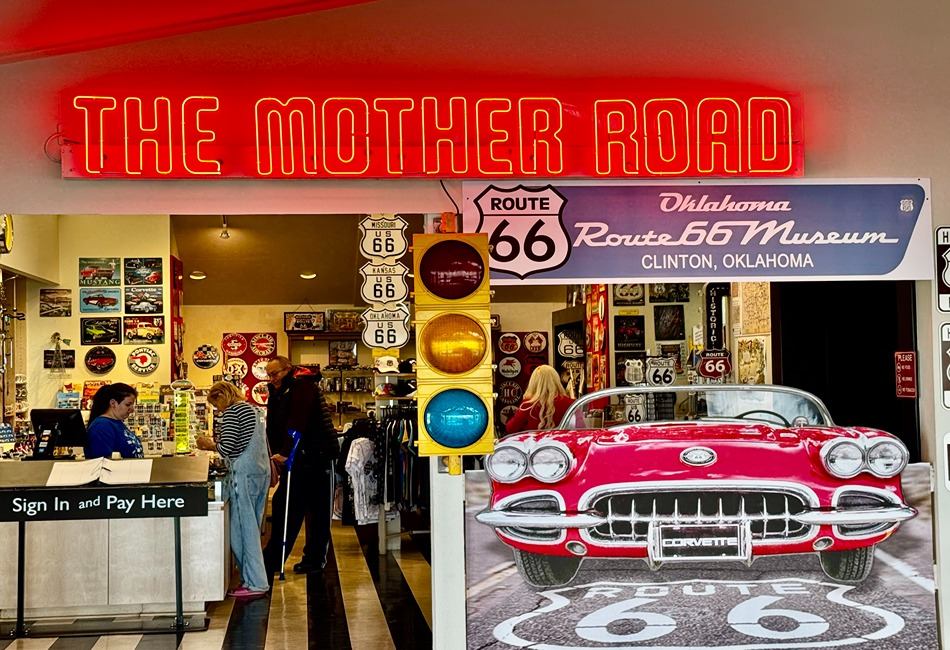
Route 66 Museum in Clinton, Oklahoma
New Mexico and Arizona Gearing Up for Centennial
In New Mexico, the city of Albuquerque is providing grants to support the restoration and construction of neon signs along its Route 66 corridor. Known as Central Avenue as it passes through the city, the road connects a series of diverse neighborhoods. Besides new flashes of neon, Central Avenue is being revitalized with large-scale murals and interactive art installations.
Architectural landmarks along Central Avenue include the KiMo Theatre, a 1927 picture palace in the unique Pueblo Deco style. Across the street in the former Sears & Roebuck building resides 505 Central Food Hall, a contemporary food hall complete with a cocktail bar. Or eat at Lindy’s, a 90-year-old diner. Other restaurants are housed in former gas stations and automotive businesses. Three 1930s and 1940s motels along Central Avenue—El Vado Motel, Monterey Motel and Imperial Inn—have been restored in recent years and feature modern amenities along with retro charm.
For the centennial, grants from the New Mexico Tourism Department are funding marketing initiatives, special events and tourism-related infrastructure improvements in Route 66 communities across the state.
In Arizona, the state’s Route 66 Centennial Commission is offering beautification and revitalization grants to businesses and communities. There will be a special centennial Route 66 passport for collecting stamps for rewards at iconic destinations along the road.
The Arizona Route 66 Museum at the Kingman Visitor Center is updating exhibits with touch screens and app integration. Nearby, travelers with pets will be able to use the new 8,000-square-foot Powerhouse Dog Park, set for completion this year. In 2024, a $7 million streetscape renovation transformed Beale Street in historic downtown Kingman into a more inviting space. The renovated Beale Street Theater will open for performances in mid-2025, providing a cultural hub for locals and visitors alike. A special screening of John Paget’s Route 66, The Main Street of America feature-length documentary will be held in July, 2026.
Though the highway of dreams was decommissioned in 1985, its spirit lives on. Route 66 is a true slice of Americana.
The US Route 66 Centennial website (route66centennial.org) is the one-stop source for official Route 66 Centennial activities, programs, events and projects.
The new Reedy Press book Route 66: The First 100 Years by acclaimed Route 66 ambassadors Jim Ross and Shellee Graham celebrates the road’s centennial with a compelling narrative and hundreds of photographs, many of them vintage.
For more travel tips and ideas for groups, be sure to Download the June edition of Leisure Group Travel and Subscribe for FREE


